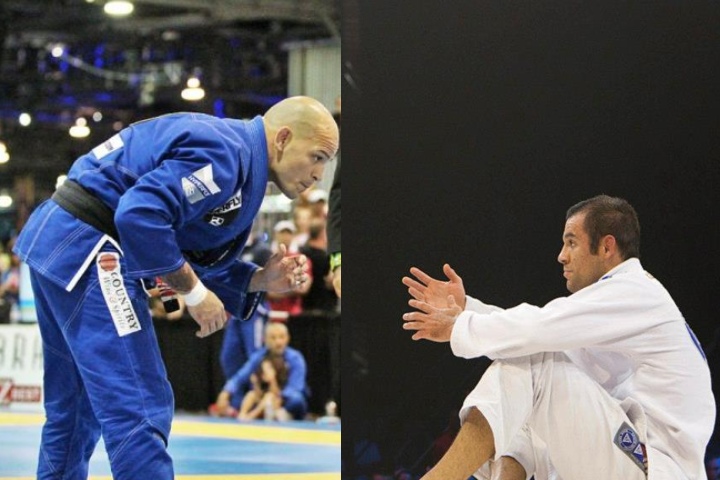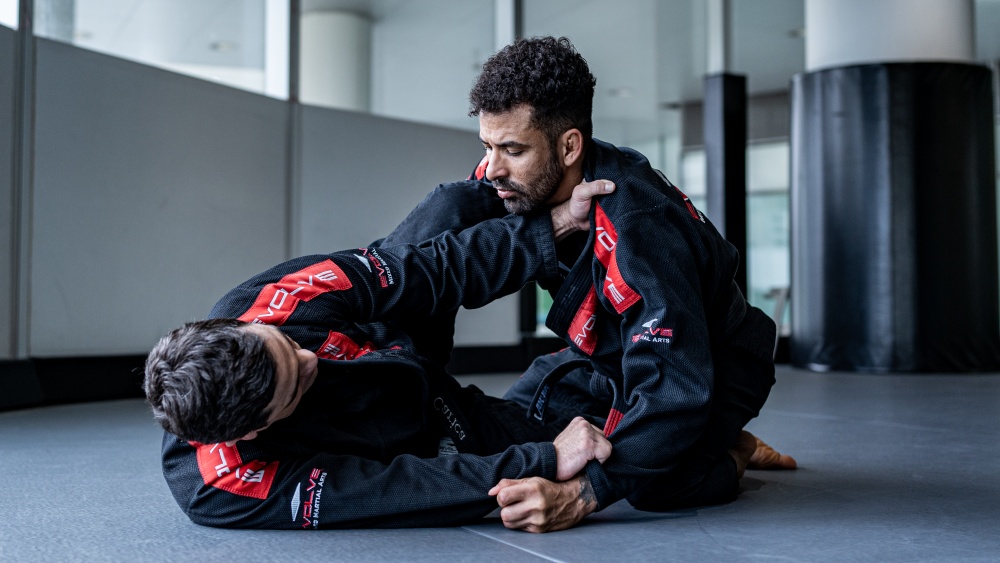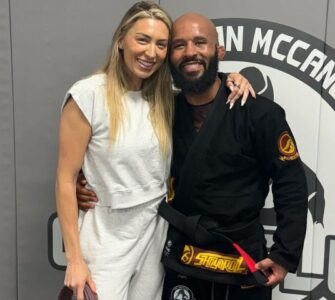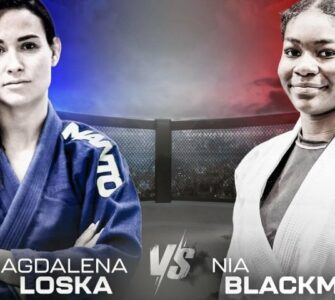Guest post by Evolve MMA, Asia’s premier championship brand for martial arts. It has the most number of World Champions on the planet. Named as the #1 ranked martial arts organization in Asia by CNN, Yahoo! Sports, FOX Sports, Evolve MMA is the top rated BJJ gym in Singapore.
Traditional Jiu-Jitsu and Sport Jiu-Jitsu – these two martial art forms, rooted in the same origin, have diverged, sparking animated discussion amongst practitioners. While Traditional Jiu-Jitsu maintains its original focus on self-defence and holistic personal development, Sport Jiu-Jitsu emphasises competitiveness and strategy under a specific set of rules.
This piece explores this dichotomy, revealing the key differences, merits, and demerits of the two similar yet distinct grappling styles. Let’s look at and discuss the age-old debate between sport and traditional Jiu-Jitsu.
The History Of Jiu-Jitsu
Historically, grappling can be traced back thousands of years, as evident in the walls of early Greek and Egyptian ruins. Theoretically, it is said that Jiu-Jitsu was developed by Buddhist monks in India who had to learn self-defense to restrain would-be attackers in their travels. The art then spread in Japan, and from there, it flourished immensely. Jiu-Jitsu (then known as Jujutsu) was used by the Samurais as a means of unarmed combat during the war. The idea was to equip warriors with the ability to take out their opponents without using strikes, as it would be impractical against armour. Thus, throws and submissions were proven to be the more helpful tools for hand-to-hand combat.
Fast forward to the 1900s, Mitsuyo Maeda, a world-known Japanese Judoka and a student of Jigoro Kano, the founder of Judo, travelled to Brazil and began teaching Judo to demonstrate its effectiveness in combat. Among Maeda’s students were the Gracie brothers, Helio and Carlos, and Luiz Franco. This is a pivotal part of history as the Gracie brothers became the forefathers of Brazilian Jiu-Jitsu. These pioneers developed the art by modifying existing techniques and expanding the efficiency and effectiveness of the moves they learned.
The Gracies tested the superiority of this new style against different martial arts. They challenged martial artists of various types and disciplines to determine which style was the strongest. Doing these challenge matches in the early days of BJJ became the testbed for techniques and was the catalyst for its early growth. Gracie Jiu-Jitsu is a super practical grappling style at its very core.
Long after, Brazilian Jiu-Jitsu spread to other countries and continents and eventually arrived in the United States in the 1970s. The Gracie family continued to spread the art of Jiu-Jitsu. Many members of the Gracie clan moved to the United States and participated in many martial arts events to share their fighting style with a broader audience. Perhaps the most important of these events is the inclusion of Royce Gracie in the Ultimate Fighting Championship (UFC). Royce shocked the martial arts world by defeating much larger opponents with techniques that seemed very foreign. Many of today’s MMA athletes credit Royce Gracie’s early exploits as inspiration for training BJJ.
BJJ became widely popular worldwide after this. As with any growing sport, rules became increasingly sophisticated and, in many ways, became the driving force in the evolution of specific techniques. After the 1990s, there have been several changes in the ruleset, but the rest more or less stayed the same. In 2002, the International Brazilian Jiu-Jitsu Federation (IBJJF) was founded by Carlos Gracie Jr. and began organising Jiu-Jitsu tournaments worldwide.
During the past decade, Jiu-Jitsu has become more popular than ever. It is practised as a form of self-defence and competitive sport, with many prestigious tournaments held globally. Technical advancement has also been constantly increasing, with some techniques being more sports-specific.
Sport Jiu-Jitsu
The focus of the sport Jiu-Jitsu is competition. Sport BJJ is typically defined under two types: Gi and No-Gi grappling. With specific formats and rules to follow depending on the tournament, organisations like the IBJJF, ADCC, EBI, WNO, and many more have shaped how people grapple today. This resulted in practitioners honing their techniques for a specific ruleset, thereby developing strategies that work best in a particular tournament while removing other fighting elements like strikes from the equation.
Modern Jiu-Jitsu competitions are held and divided into different categories. Tournaments are done in brackets based on the competitor’s age, sex, weight class, and belt color. The rules dictate what techniques are allowed (and not allowed) and are dependent on the belt level of the competitor. It is done to keep the matches even.
Jiu-Jitsu competitions still emphasise positional hierarchy by using points to determine who wins the match. Positions like side control, mount, and back mount, allow you to dominate the opponents using pressure. They are also prime spots to attempt submissions and rain down strikes if permitted. While useful in determining who is better positionally, the point system is the primary reason many techniques are used and others omitted. Oftentimes, grapplers can be seen pulling guard at the start of a match as they look to make contact with the opponent. While it is not ideal for a self-defense scenario, it gives the guard puller the advantage as it limits the opponent from scoring a takedown.
Competitions are available for grapplers of any level, from beginner to advanced. It is not uncommon to see grapplers make a living out of competing. Though unsustainable to some, winning prestigious tournaments and superfights can certainly build credibility, thus giving you more leverage to charge higher.
Traditional Jiu-Jitsu
Traditional Jiu-Jitsu focuses on self-defence. Its goal is to give the practitioner the ability to survive physical altercations during life-and-death confrontations. Traditional Jiu-Jitsu aims to control the opponent using grips, and controlling holds while minimising the damage they take. Comparable to the early challenge matches of Gracie Jiu-Jitsu, traditional Jiu-Jitsu focuses on its practitioner’s ability to carry themselves in fights for survival with no referees, points, or time limits, even with weapons drawn against them.
Most traditional Jiu-Jitsu gyms focus on self-defense situations, putting themselves in the most likely scenarios that may happen in real life. They use the Gi in training as it simulates wearing typical street clothes like a jacket or coat. Doing so allows you to train with additional grips, which can be used to sweep, choke, or control the assailant. Many techniques you see in traditional Jiu-Jitsu focus on countering haymakers, common holds like the headlock, and grabs to the jacket. Sometimes, techniques like knife and gun disarms are also taught in classes.
Conclusion
While today’s brand of Jiu-Jitsu may seem like a different sport altogether, it is still very much a formidable fighting style. It is best to have an open mind and learn as much as possible from these two types, as both have pros and cons.



















